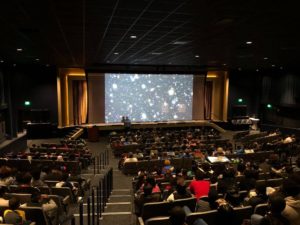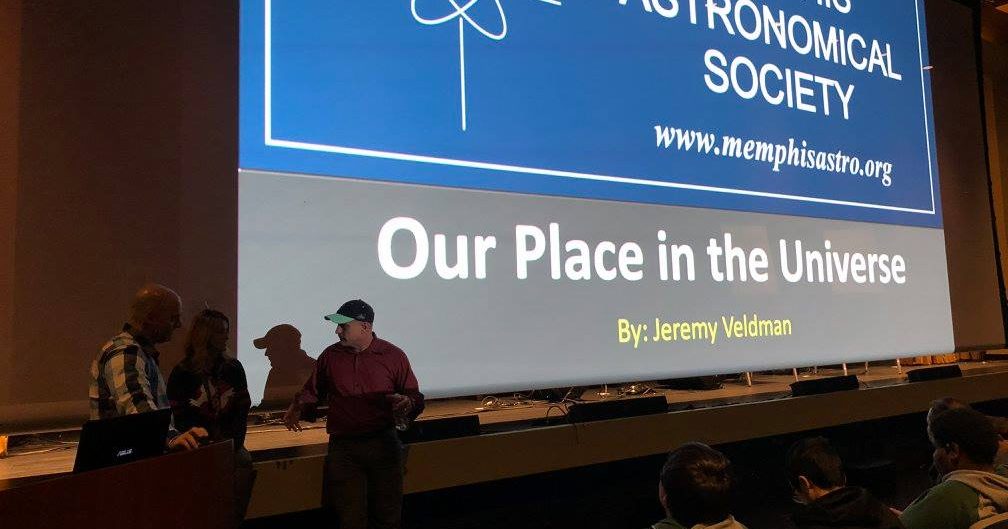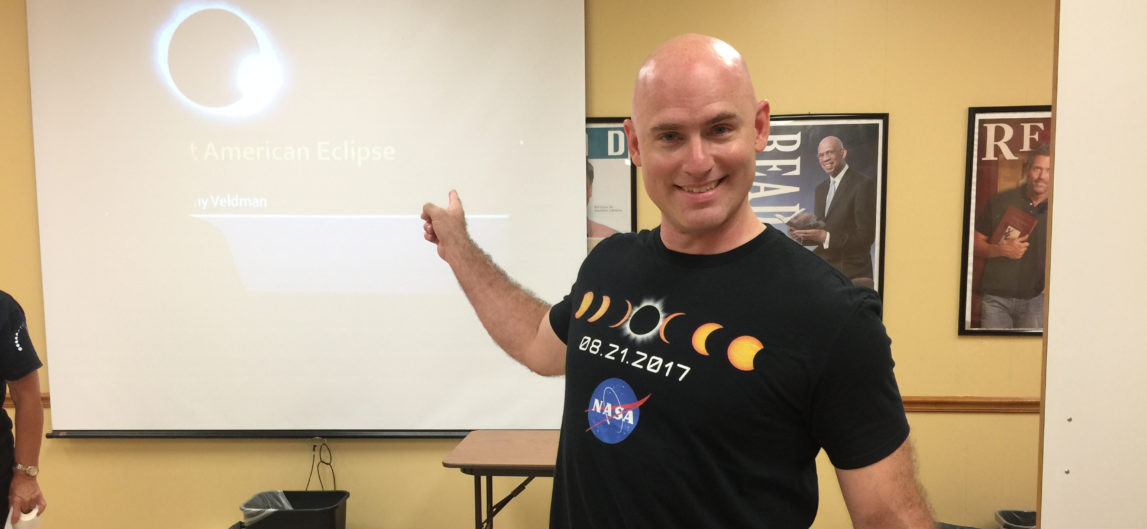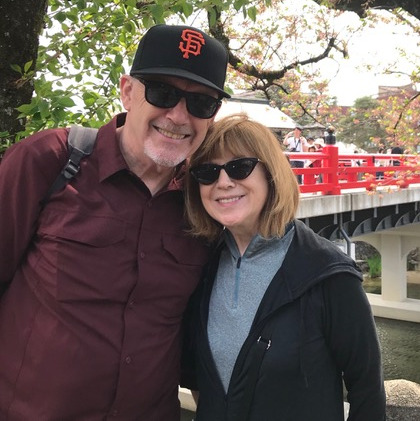Arguably the best venue I’ve ever spoken at was the Graceland Guest House for the Memphis Comic and Fantasy Club (MCFC) weekend in November 2017. The Graceland Guest House opened earlier that year and houses a pretty impressive theater room that seats several hundred people, has a massive screen, stage, and state-of-the art sound system.
I spoke the morning before the event began to a couple groups of Junior High and High School students. My goal was to tie in a Star Wars theme (A long time ago in a galaxy far, far away…) to an image of the Hubble Deep Field- arguably, the most-famous image ever taken in astronomy. It always bothered me that some “Sci-Fi” geeks consider “The Star Wars Galaxy” to be the same galaxy as ET was from (ET- The Extraterrestrial, circa 1982), M33- The Triangulum Galaxy, I believe. Although intriguing, I think it sells the premise of Star Wars DRAMATICALLY Short.

Picture of the Hubble Ultra Deep Field- 10,000 galaxies within a section of sky equal to a grain of sand held at arm’s length!
The Hubble Ultra Deep Field was a 12-day exposure taken by the Hubble Space Telescope a few years after it was launched/fixed and contains some 10,000 galaxies- each it’s own “Island Universe” of 100 billion suns- some so far away that the light we see in that image began its journey to Earth, before the Earth even existed! Even more amazing, this entire field of 10,000 galaxies could fit within a section of the sky equal to a grain of sand held at arm’s length (1-25 millionth of the sky!). Try to absorb that fact in your mind for a minute… Now, read the Star Wars Premise: “A long time ago in a galaxy far, far away…” I’d like to think that the Star Wars story took place in a galaxy like one of those faint “fuzzy smudges” barely visible in the Hubble Deep Field, or one of its equivalent exposures and lost among the 100 billion-or-so galaxies that make up the Observable Universe. NOT M33, the Triangulum Galaxy- one of the closest galaxies to our Milky Way and easily observable with a good set of binoculars on a clear night. Sci-Fi geeks shouldn’t limit their imaginations.
My presentation was about 15 minutes long and began with a few slides showing our place in the Milky Way galaxy- 25,000 light years from the galactic core, our sun just one of over 200 billion stars in our galaxy. I also had a couple of slides showing our galaxy’s place in the Local Group- a 10 million light year wide cluster containing roughly 54 galaxies; and a slide showing the Virgo Supercluster- containing our Local Group (Milky Way, Andromeda, and 50 other galaxies) along with other galaxy clusters, such as the Virgo Cluster and Fornax Cluster. I also showed a brief video clip of the relative sizes of our Earth and Sun to some other stars such as Rigel, Eta Carinae, Antares, and Betelgeuse. This seemed to have the biggest impact on my young audience as it’s cool to see the visual illustration of our “tiny” Earth being swallowed up by our gigantic sun; and then the Sun being swallowed up easily by some of the larger stars in our galaxy! It’s mind-blowing to see just how small we are (not even a speck of dust!) compared to some of the other stars in our Universe.
I concluded the talk by showing a clip from the Sloan Digital Sky Survey (SDSS) showing a pan out from our Milky Way galaxy to a hierarchical view of hundreds of thousands of galaxies, all the way out to the cosmic microwave background and the edge of the observable universe. And that led to my final slide- The Importance of Awe- From Sky & Telescope Magazine, March 2016, Contributing Editor William Sheehan, pg. 84. Can kids today still experience the 11 th Emotion? Awe, the 11 th Emotion (fear, love, anger, sadness, etc), is the key to loving astronomy. A generation or two ago, it was still fairly easy to see the Milky Way in the night sky, even in urban areas. Today, 1 in 5 people have ever seen the Milky Way, because of the prevailing problem of light pollution. Combine this with the fallout of the explosion of technology- leading to shorter attention spans and a constant hypnotic addition to our iPhones- and it becomes an intriguing (and disturbing) question.
Awe- an “overwhelming and bewildering sense of connection with a startling universe that is usually far beyond the narrow band of our consciousness” (Sky & Telescope, March 2016, pg. 84) is suddenly in jeopardy. Can kids today still experience this emotion? And how long does it take for them to go from “awe-some!” to “bor-ing”? As a kid growing up, there was no greater thrill than seeing the rings of Saturn, or the craters on the moon through a telescope for the first time. And, at public observing session I still hear people of all ages exclaim “OH WOW!!” when they see these sights for the first time through my telescope. It can truly be a transformative experience.
At the end of my talk, several kids came up and took postcards for the Memphis Astronomical Society, and a few teachers asked me if I give the talk in their schools sometime. I even had one kid come up and say: “you know I already knew all of that stuff!” Well, I’m glad he was engaged.
Overall, it was a thrill to give a talk on my passion in the brand new theater room at the Graceland Guest House, and I think I got my message across… But then, I was followed by screams and loud cheering, as another “Jeremy” hit the stage- Jeremy Shada!
Hey, this is a Comic and Fantasy Convention…








